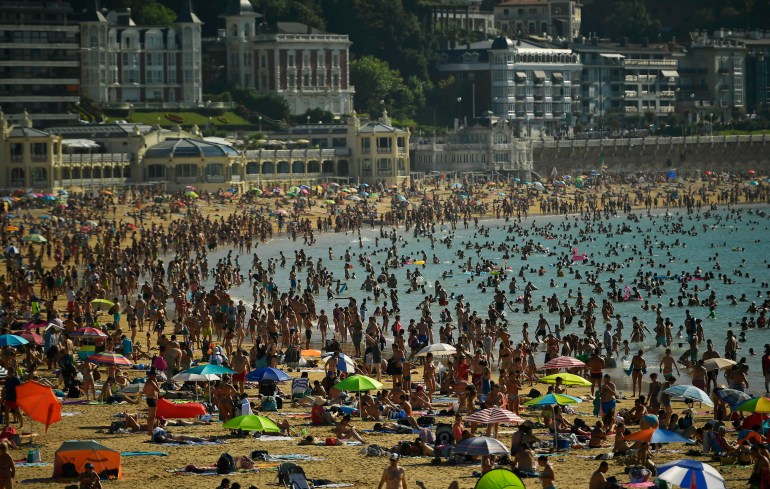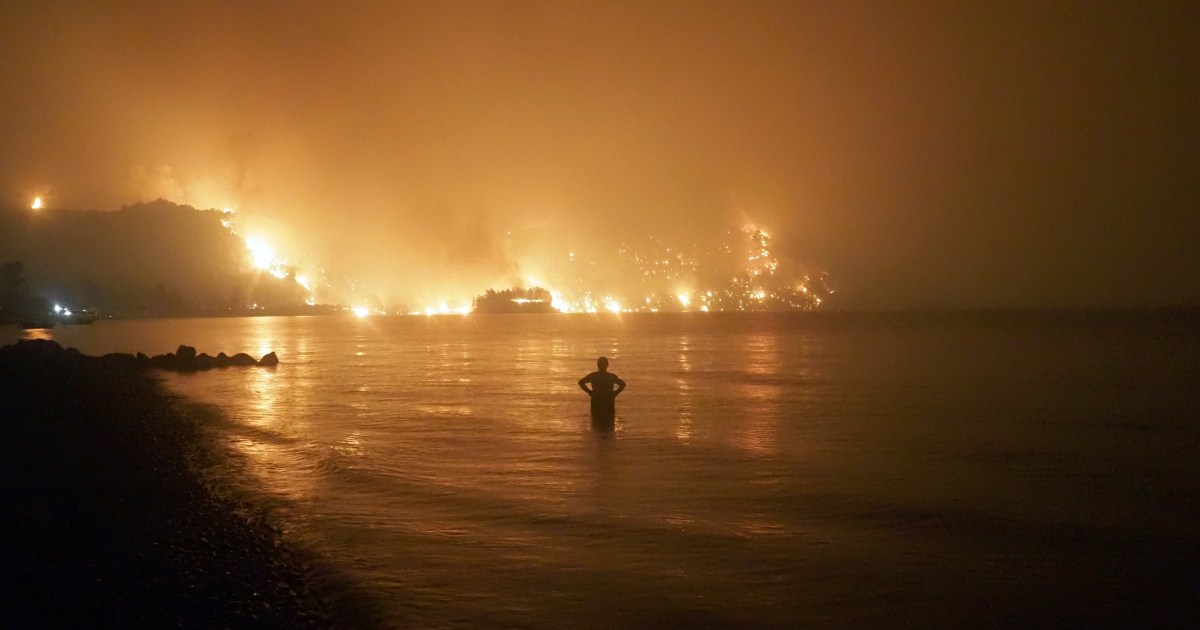Sweltering temperatures in Spain and France have shed light on the increasing frequency of heat waves in Europe.
In just over two decades, the continent has experienced its five hottest summers since 1500.
2021: the hottest ever
Last year was the hottest summer on record in Europe, according to the European climate change monitoring service Copernicus.
Between late July and early August 2021, Greece suffered what Prime Minister Kyriakos Mitsotakis called the country’s worst heat wave in more than 30 years, with temperatures reaching 45 degrees Celsius (113 Fahrenheit) in some areas.
In Spain, temperatures reached 47C in parts of the south, according to national weather agency AEMET.
The heat and drought have sparked large wildfires along the Mediterranean, from Turkey and Greece to Italy and Spain.
2019: Northern European Chokes
The summer of 2019 brought two heat waves, at the end of June and mid-July, which claimed around 2,500 lives, according to the Center for Research on the Epidemiology of Disasters at the Belgian University of Leuven.
In France, temperatures reached a record 46°C on June 28 in the southern town of Verargues. Thousands of schools have been closed.
On July 24 and 25, northern Europe scorched in record heat. Temperatures of 42.6°C were recorded in Lingen in northwestern Germany, 41.8°C in Begijnendijk in northern Belgium and 38.7°C in the English city of Cambridge.
2018: Drought drains the Danube
The second half of July and early August 2018 saw very high temperatures across much of Europe and rivers drying up due to drought.
The Danube fell to its lowest level in 100 years in some areas, exposing in particular the tanks of the Second World War in Serbia which had been submerged since the conflict.
Portugal and Spain have suffered extremely destructive forest fires.
2017: months of heaviness
Much of Europe, but especially the south, cooks from late June through August.
Spain set a record high of 47.3°C on July 13 in the southern town of Montoro.
Persistent drought has sparked forest fires in Portugal.

2015: Consecutive heat waves
Heat wave after heat wave throughout the summer of 2015, which killed around 1,700 people in France.
In the UK, roads melted and trains were delayed in the hottest July on record, with temperatures reaching 36.7C at Heathrow Airport.
2007: Greek forests go up in flames
Central and southern Europe was parched by drought in June and July, sparking a wave of forest fires in Italy, North Macedonia and Serbia.
In Hungary, 500 people died because of the heat. In Greece, the worst fires in half a century – some believed to be the result of arson, but others the product of heat and drought – have destroyed 4% of the country’s forests.

2003: 70,000 dead
The UK, France, Italy, Spain and Portugal all experienced exceptional heat in the first half of August, with Portugal experiencing a record 47.3C at Amareleja in the south .
A European Union study of 16 countries puts the number of excess deaths across the bloc during this heat wave at 70,000, with France and Italy each recording between 15,000 and 20,000 deaths, according to various reports since.
In France, most of the victims were elderly people left to fend for themselves in an episode that traumatized the country and led to the implementation of new protective measures for vulnerable people during heat waves.

